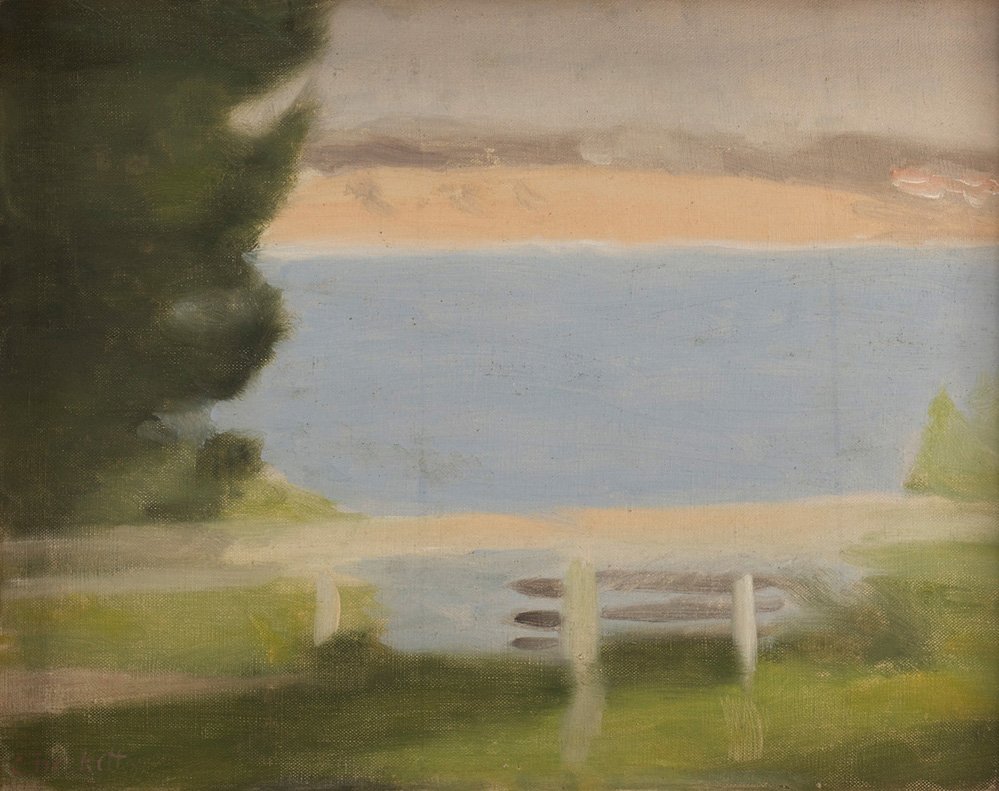The empty seat
Clarice Beckett
The empty seat c. 1925-30
oil on canvas on board
Bendigo Art Gallery
Anonymous Gift under the Taxation Incentives for the Arts Scheme, 1993
Image courtesy of Bendigo Art Gallery
Beckett’s quest was to give material form to the ethereal climate that enveloped her and the places through which she walked and stopped to paint. Beckett’s paintings absorb us into their spatial and emotional realms. The empty seat is one work among many that reveals Beckett’s fine modulation of colour, form, and mood—here a mood of serenity, or perhaps melancholy—to encapsulate what historians Mary Eagle and John Jones have described as an incomparable ‘vision that made poetry of unregarded things.’


